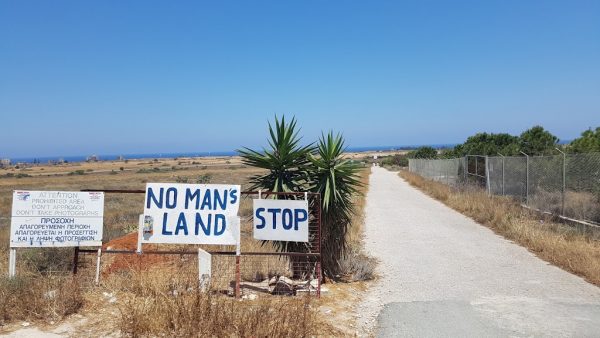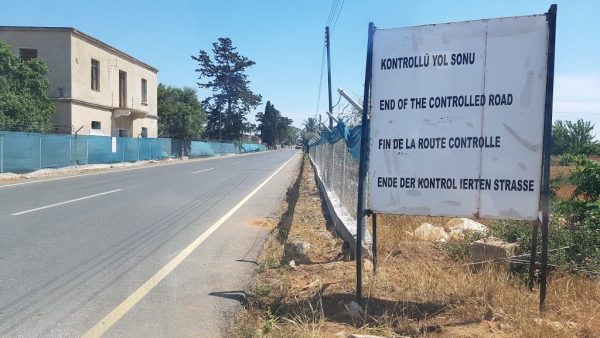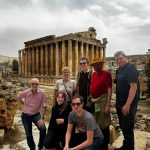
In Europe, the stunning Mediterranean island of Cyprus has a reputation for being a party island for British and European holidaymakers looking to take advantage of the resorts that dot the coast of Southern Cyprus. However, there is a dark side to Cyprus that few people see. Quite literally, the entire Northern end of the island is cut off by a boundary of ghost towns and military bases. To coincide with the announcement of our Divided Cyprus tour we are going to give an insight into the dark tourism sites in Cyprus we will visit on our adventure this September.
In the summer of 1974, the sleepy island of Cyprus was gripped by a coup carried out by the Cypriot National Guard who installed a military Junta with the aim of forming a union with Greece and turning the island into the Hellenic Republic of Cyprus.
In response, Cyprus was invaded by the Turkish military under the codename Operation Atilla. The invasion was claimed to prevent the ethnic cleansing of Turkish Cypriots. The Greek military junta collapsed and by August 1974, around 37% of Cyprus was now in Turkish hands and a ceasefire was declared. The ceasefire line became the UN Buffer Zone between Cypriot and Turkish sides and today is called the Green Line. The war killed and displaced hundreds of thousands and both sides remain in a standoff to this day. Today, the Turkish Republic of Northern Cyprus is only recognized as a country by Turkey.
5. The Gangsters Paradise of Paulo Paolides
When it comes to dark tourism sites in Cyprus, that one is a good one. This preserved 1970s mansion is surrounded by a dark history, intrigue, mystery, and a Turkish military base! This was the former home of who became infamous as an arms dealer for the Greek Cypriot nationalist guerrilla organization, the EOKA.
The former gun runners mansion is set in a strategic position overlooking the Mediterranean coast. This is not just for watching the sunset, Paolini would use binoculars to monitor the movement of contraband traffic even as the mansion remained invisible from the seashore. A great spot for watching smuggler ships and a Turkish invasion as he escaped by the skin of his teeth through an emergency tunnel under his bed.
The Turkish military generals made good use of the luxury mansion and promptly set up an HQ there which is why it remains a military camp to this day. Paulo expected to return one day and even sent the Turks a special type of polish to maintain his adored Chinese lacquer furniture in the mansion. Paolo would never return as he was gunned down by a Turk during a Mafia meeting in the 1980s.
4. Sovereign British Military Bases

This is one for the most hardcore of country collectors: The British Sovereign Bases of Akrotiri and Dhekelia. Since 1960, Britain has held Overseas Territory on Cyprus. The bases have been classed a territory that must be visited in order to claim the title of visiting every country in the world.
They’re like a small slice of Britain with British police stations, fire brigades, and even a British run military fish and chip shop which we pay a visit to on our tour. The territory is an important signal intelligence center and provides a vital strategic part of the United Kingdom communications gathering and monitoring network in the Mediterranean and the Middle East. However, unlike most military areas the public are allowed to enter large parts of it.
3. The Abandoned Nicosia Airport
Once the flight hub of Cyprus, the airport at Nicosia was engulfed in the conflict of 1974 and now lies abandoned and within the UN buffer zone on the edge of Europe’s only divided city. Built back in 1968, the airport was an example of an ultra-modern airport at its time. Today it remains almost as it was in 1974 with passport control gathering dust, vending machines, and passenger planes rotting on the runway.
Unfortunately, public access is heavily restricted due to the airport forming part of the wider complex housing the headquarters of the UN’s peacekeeping force on the island. As a result, we do not visit it on our tour.
2. Abandoned housing Project
In the hills of Northern Cyprus sits a ghost town of abandoned buildings constructed by the infamous Turkish Cypriot company AGA Development which had ambitions to build over 300 luxury homes in northern Kyrenia. One of the managers of this company was a British gangster and former nightclub boss named Gary Robb.
In a few months, almost 85 percent of the homes had been sold for hefty sums of money mainly to British customers. The ambitious housing project was never finished and it’s believed over 400 British citizens lost a total of 40 million euro in the doomed deal with AGA Development. Today, the project lies abandoned and is a dream for lovers of Urbex and a great example of dark tourism sites in Cyprus.
1. Varosha
Once known as the French Riviera of Cyprus, the beach resort of Varosha was the pearl in the crown of Cyprus and known for attracting artists, intellectuals, and high society such as Richard Burton, Brigitte Bardot, and Elizabeth Taylor.
Today, Varosha is home to dozens of grand hotels where you’ll have the pick of any room and miles of sandy beaches with no-one on them meaning it’s just you, sun, sand, sea… and heavily armed Turkish soldiers in watchtowers with orders to shoot on sight.
The resort was ravaged by the war in 1974 and today lies abandoned with keys left in cars and dinner tables still set out as they were left when the residents fled. The only inhabitants are wild animals and Turkish military patrols who will shoot on sight any unauthorized people in the zone. Modern Varosha is truly a ghost town with post-apocalyptic vibes. Whilst we can’t get inside, we can get you damn close and right next to the fence that leads into the forbidden zone.
To visit most of the sites listed in this article, sign up for our upcoming Divided Cyprus tour this September and explore the lesser-seen Turkish controlled side of this stunning island.





